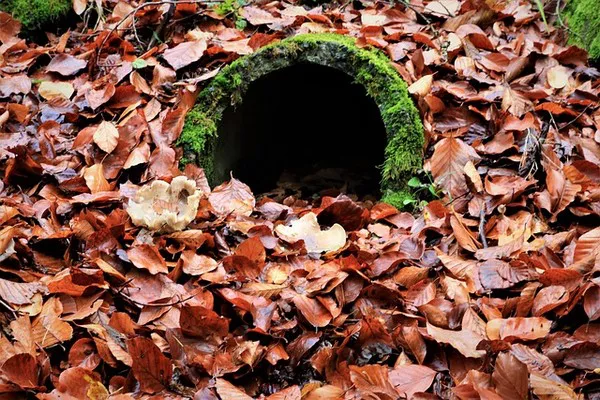Sewage treatment plants play a crucial role in purifying wastewater, ensuring the protection of public health and the environment. However, what often remains hidden from the public eye is the fate of the residual byproduct generated during this process – sewage sludge. This article delves into the journey of sewage sludge, exploring how it is managed, repurposed, and transformed into valuable resources that benefit society and promote environmental sustainability.
Understanding Sewage Sludge
Before delving into its journey, it’s essential to understand what sewage sludge is. Sewage sludge is the semi-solid, residual material left behind after wastewater is treated at a sewage treatment plant. This residual matter contains a mixture of organic and inorganic materials, including solids from domestic, industrial, and commercial sources. Its composition can vary significantly depending on the source of the wastewater and the treatment processes employed at the plant.
The Treatment Process
Sewage treatment plants utilize a combination of physical, chemical, and biological processes to clean wastewater. The primary goal is to remove pollutants, pathogens, and contaminants from the incoming wastewater, rendering it safe for release into natural water bodies or reuse. The treatment process typically involves several stages, including:
Screening and Primary Treatment: Large solids and debris are removed through mechanical screening, followed by settling to remove heavier particles.
Secondary Treatment: Microorganisms are used to break down and remove organic matter and nutrients from the wastewater.
Tertiary Treatment: In some cases, additional treatment steps are employed to further remove specific contaminants, such as phosphorus and nitrogen.
The Fate of Sewage Sludge
Once the sewage treatment process is complete, the remaining sewage sludge must be managed in an environmentally responsible manner. The journey of sewage sludge can follow several paths, each with its own benefits and challenges:
1. Incineration:
Some sewage treatment plants incinerate sewage sludge to reduce its volume and destroy harmful pathogens.
Incineration can produce energy in the form of heat, which can be used to power the treatment plant or provide electricity to the grid.
2. Landfill Disposal:
Historically, sewage sludge was often disposed of in landfills, but this practice is becoming less common due to environmental concerns.
Landfill disposal can pose the risk of leachate generation and groundwater contamination.
3. Agricultural Land Application:
Treated sewage sludge, known as biosolids, can be applied to agricultural land as a nutrient-rich soil conditioner and fertilizer.
Strict regulations and monitoring ensure that biosolids meet quality and safety standards for land application.
4. Conversion to Biogas:
Anaerobic digestion is a process in which microorganisms break down sewage sludge in the absence of oxygen, producing biogas (mainly methane) and a nutrient-rich digestate.
Biogas can be used for energy production, and the digestate can be applied to land as a soil conditioner.
5. Innovative Resource Recovery:
Emerging technologies are being explored to transform sewage sludge into valuable resources, including biofuels, bioplastics, and high-value chemicals.
These approaches aim to maximize resource recovery and minimize waste.
The Benefits of Responsible Sewage Sludge Management
Responsible sewage sludge management offers numerous advantages:
1. Environmental Protection:
Proper treatment and disposal of sewage sludge safeguard water quality and reduce the risk of groundwater contamination.
Land application of biosolids enhances soil fertility and reduces the need for synthetic fertilizers.
2. Resource Recovery:
Recycling sewage sludge into valuable resources contributes to resource conservation and a circular economy.
Biogas and energy recovery help reduce the carbon footprint of sewage treatment plants.
3. Economic Opportunities:
Innovative technologies for sewage sludge valorization can create new economic opportunities and industries.
Reduced disposal costs and potential revenue from resource recovery can offset treatment expenses.
4. Sustainability and Climate Mitigation:
Responsible sewage sludge management aligns with sustainability goals, promoting a more environmentally friendly approach to wastewater treatment.
Biogas and biofuel production can mitigate greenhouse gas emissions and combat climate change.
The Role of Regulation
The management of sewage sludge is subject to stringent regulations and guidelines at both the federal and state levels in many countries. These regulations are designed to protect public health, safeguard the environment, and ensure the safe and responsible handling of sewage sludge.
Regulatory frameworks typically include standards for the quality of biosolids, land application practices,and limits on contaminants. Regular monitoring and reporting are essential components of compliance, helping to maintain transparency and accountability in sewage sludge management.
Future Directions in Sewage Sludge Management
As environmental awareness grows and technology advances, the future of sewage sludge management holds exciting possibilities. Emerging technologies aim to further reduce the environmental impact of sewage treatment and maximize resource recovery. Some notable trends include:
1. Advanced Thermal Conversion:
Technologies like hydrothermal carbonization and pyrolysis offer innovative approaches to convert sewage sludge into valuable carbon-based materials.
2. Nutrient Recovery:
Efforts to recover phosphorus and nitrogen from sewage sludge contribute to nutrient recycling and reduce reliance on mined fertilizers.
3. Circular Economy Initiatives:
Collaboration among stakeholders, including wastewater utilities, agricultural communities, and industry, promotes a circular economy approach to sewage sludge management.
4. Research and Innovation:
Ongoing research and development continue to explore novel ways to transform sewage sludge into sustainable products and energy sources.
In conclusion
sewage sludge management is an integral part of wastewater treatment and environmental stewardship. Responsible handling and resource recovery from sewage sludge offer numerous benefits, including environmental protection, resource conservation, economic opportunities, and climate mitigation. With evolving technologies and stringent regulations, the future of sewage sludge management promises to be both sustainable and innovative, contributing to a cleaner and more sustainable world.

